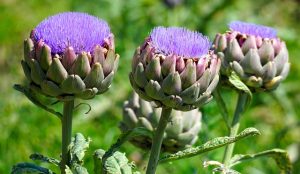On this page, we’ll explore perennials that not only survive in shade but thrive, transforming those less sunny spots into captivating corners of your landscape.
Understanding Shade and Its Impact on Plant Growth
Gardening in shaded areas requires a good understanding of the different light conditions. The amount of sunlight can heavily influence plant selection and overall garden health. Effective gardening in shade starts with recognizing these categories:
Light Shade: Palm trees or smaller deciduous trees create this type of shade by filtering sunlight. Light-loving perennials will flourish here with a few hours of direct sunlight each day, promoting healthy growth and vibrant blooms.
Partial Shade: This condition typically features sunlight in the morning or late afternoon. Perennials positioned here benefit from some warmth and light while still enjoying cool shade for the rest of the day, allowing for lush foliage and heavy blooms.
Deep Shade: In deep shade, light barely penetrates the foliage. These areas are often found beneath thick tree canopies. Selecting shade-loving perennials that revel in these conditions is critical, as they have adapted to survive with minimal light.
Understanding your garden’s unique conditions will empower you to choose the right plants for success!
Hostas
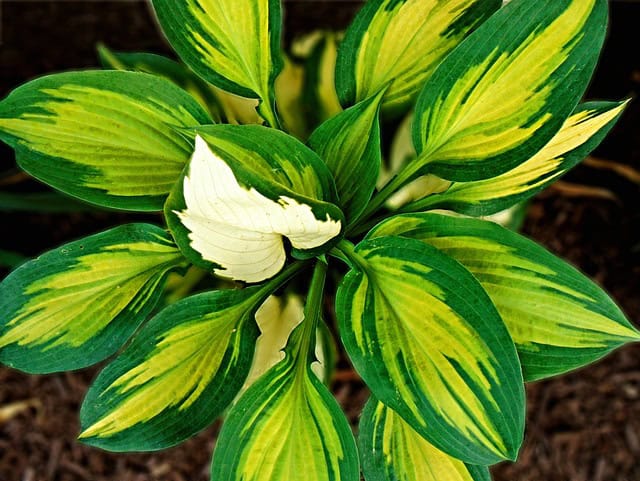
Hostas, with their impressive variety of leaf shapes and colors, are a garden staple for shaded areas. Ranging from deep green to stunning blue and accented with striking white or yellow edges, they bring richness to your landscape.
Planting Tip: Hostas do best in rich, moist, well-drained soil and require regular watering, particularly during dry spells.
Variety Spotlight: Varieties like ‘Sum and Substance’ boast enormous leaves, while ‘Blue Angel’ has deep, frosty blue foliage.
Companion Planting: Pair hostas with ferns or astilbe for a layered look, mixing textures and colors that will harmonize beautifully in shady corners.
Astilbe

Astilbe provides a dramatic display of feathery flower plumes that can add height and a soft touch to any shade garden. Blooming from mid-summer through fall in colors of pink, red, white, and purple, these plants create eye-catching contrasts against deep green foliage.
Planting Tip: Astilbes thrive in consistently moist soil, so consider placing them near a water source, like a pond or rain garden.
Variety Spotlight: ‘Fanal’ offers deep red blossoms, while ‘Visions in Pink’ provides lovely soft pink flowers.
Additional Considerations: Astilbes can be susceptible to powdery mildew, particularly in humid areas. Give them good air circulation by spacing them adequately.
Ferns
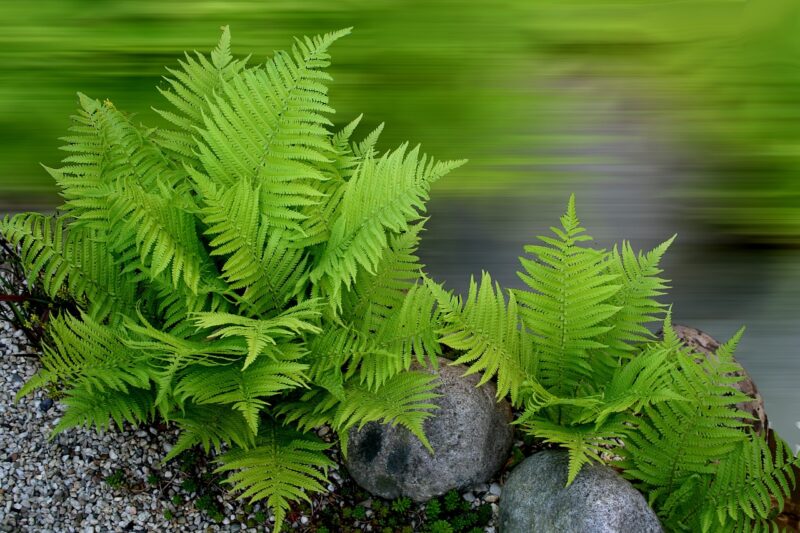
Ferns embody the essence of woodland gardens and are an incredible choice for shaded areas. Among the most celebrated ferns are the lady fern and Japanese painted fern, each offering distinct textures and colors from delicate fronds to bold, graphic structures.
Planting Tip: Fertile, well-drained soil with a slightly acidic pH is ideal. Some ferns can adapt to more alkaline soils, so assess your garden conditions before planting.
Variety Spotlight: The ‘Brilliance’ fern catches the eye with its striking color, while ostrich ferns add a graceful arching shape to your garden layout.
Layering: Contrasting different fern types can establish an intricate look, mixing sizes and shapes for visual interest.
Bleeding Heart (Dicentra spectabilis)
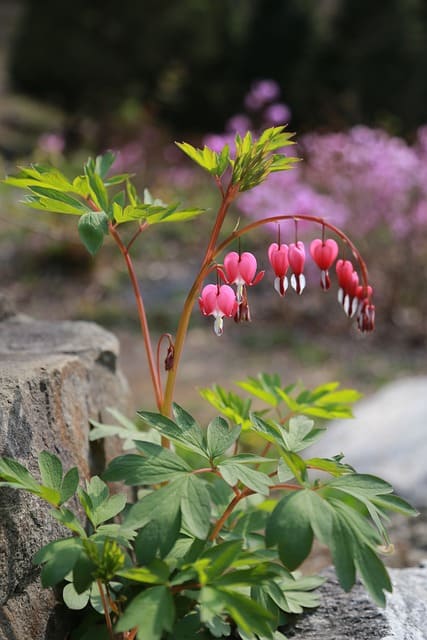
Bleeding hearts are a true garden delight during the spring months, displaying unique heart-shaped flowers that dangle from arching stems.
Planting Tip: They flourish in well-drained, humus-rich soil and prefer a little afternoon shade during hotter months, making them perfect for dappled light areas.
Companion Ideas: Grow them alongside hostas to create a colorful contrast between the heart-shaped flowers and broad, bold leaves.
After Bloom Care: Once blooming is done, the foliage will die back in summer. Consider planting later-blooming perennials nearby to fill this gap.
Pulmonaria (Lungwort)

Pulmonaria stands out for its stunningly spotted foliage and early spring flowers in shades of blue, pink, and white. These hardy perennials adapt well to various soil types, bringing both texture and color to shaded gardens.
Planting Tip: Lungwort prefers moist, organically rich soils, making it ideal for naturalized areas or under trees.
Variety Spotlight: ‘Sissinghurst White’ offers pure white blooms, while ‘Diana Clare’ showcases vivid pink flowers that turn blue as they mature.
Foliage Interest: The leaves are often one of the main attractions, especially in early spring before the flowers appear.
Epimedium (Bishop’s Hat)
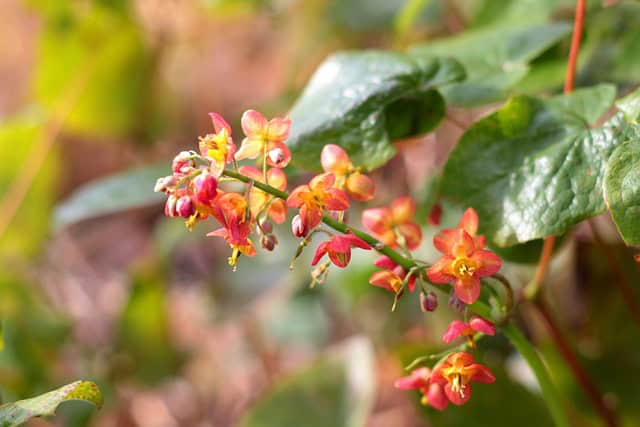
Epimedium, often called bishop’s hat, offers unique heart-shaped leaves and delicate flowers that attract attention in any shaded garden.
Planting Tip: This perennial thrives in dry shade, making it particularly valuable in difficult areas where other plants might struggle.
Variety Spotlight: ‘Rubrum’ exhibits stunning maroon flowers above striking green leaves, while ‘Frohnleiten’ offers cheerful yellow blooms.
Ground Cover Potential: With its spreading nature, Epimedium works wonderfully as a low-maintenance ground cover, suppressing weeds effectively.
Heuchera (Coral Bells)
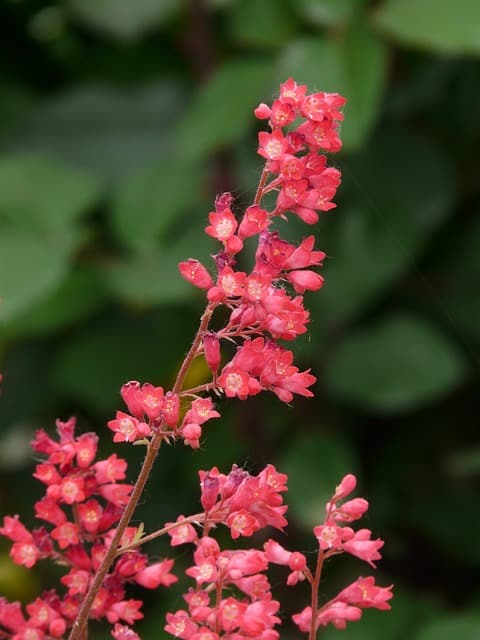
Heuchera, commonly known as coral bells, bring a kaleidoscope of colors to shaded areas with foliage ranging from dark plum to bright lime green.
Planting Tip: They prefer well-drained soil and provide better color when grown in partial shade rather than full shade.
Variety Spotlight: ‘Palace Purple’ features deep purple leaves that create stunning contrast, while ‘Caramel’ shows off beautiful golden-orange foliage.
Attracting Wildlife: Their petite flower spikes bloom in summer, providing nectar for pollinators like bees and hummingbirds.
Tiarella (Foamflower)
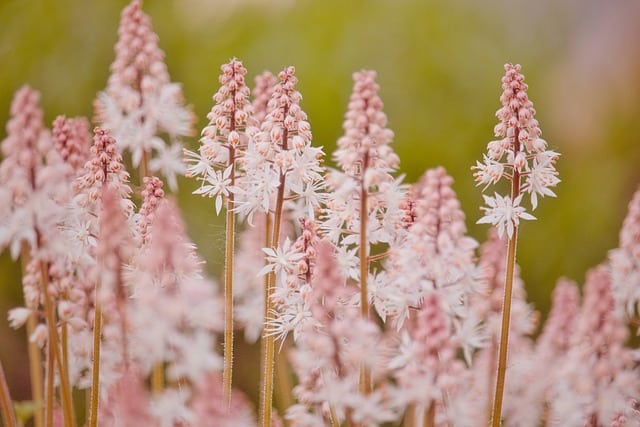
Tiarella adds a soft texture to shaded areas with its charming, foam-like clusters of tiny white flowers. The versatile foliage comes in a range of colorful patterns, enhancing the beauty of any shady spot.
Planting Tip: Tiarella thrives in moist, well-drained soils and can tolerate wet conditions, making them great near ponds or in rain gardens.
Variety Spotlight: ‘Sugar and Cream’ features variegated leaves and delicate star-like flowers that bloom above the foliage in early spring.
Companion Planting: Pair Tiarella with ferns for a gorgeous combination of contrasting textures and colors.
Japanese Anemone
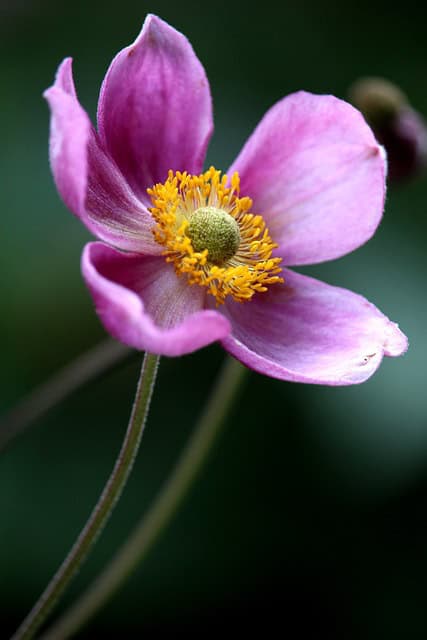
Japanese anemones offer late-season interest in the garden, providing graceful white or pink flowers on tall, slender stems. These perennials bring charm and elegance to shaded spaces.
Planting Tip: While they can tolerate partial shade, especially in hotter climates, they perform best with some sunlight exposure during the day.
Variety Spotlight: ‘Honorine Jobert’ showcases pure white blooms that bloom late in the season, extending your flowering period.
Garden Design: With their height, these flowers work beautifully towards the back of a flowerbed, allowing for layering with shorter perennials in front.
Liriope (Monkey Grass)
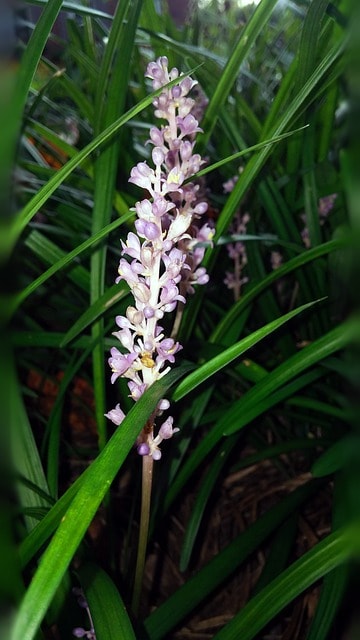
Liriope is a highly versatile ground cover that thrives in shady gardens. Its grass-like foliage creates lush greenery, while purple flower spikes appear in late summer.
Planting Tip: This perennial adapts well to varying soil conditions, from sandy to clay, making it a resilient option for challenging spots.
Variety Spotlight: ‘Muskogee’ features tall spikes of lavender flowers and thrives in dappled sunlight or shaded areas, while ‘Big Blue’ offers dense foliage focused on retaining moisture.
Maintenance: Liriope requires minimal care and is drought-tolerant once established, perfect for busy gardeners.
Solomon’s Seal
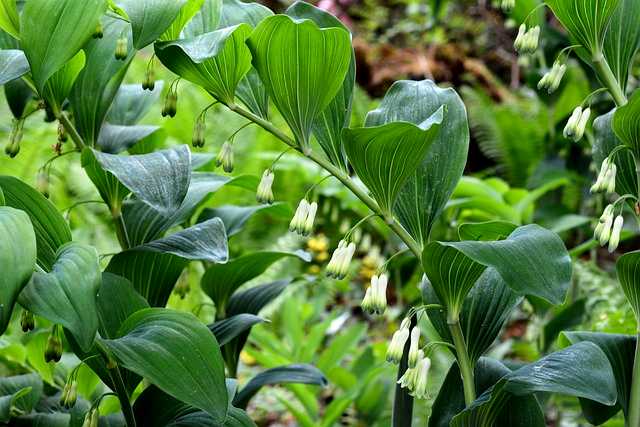
Solomon’s Seal is a graceful perennial known for its elegant, arching stems adorned with tubular flowers. They offer great texture and height in shaded areas.
Planting Tip: They thrive in rich, well-drained, moist soil and appreciate a location with organic matter to aid growth.
Companion Planting: Ideal alongside hostas and ferns, Solomon’s Seal complements other woodland plants, making space feel lush and layered.
Aesthetic Appeal: As the season progresses, the foliage takes on rich autumn colors, adding an extra visual dimension to the garden.
Brunnera (False Forget-Me-Not)
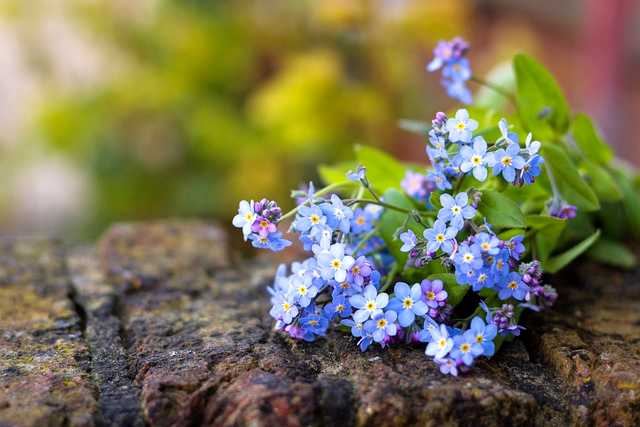
Brunnera is cherished for its small, bright blue flowers that emerge in early spring—perfect for creating a soft and beautiful touch in shaded areas.
Planting Tip: This perennial thrives in moist, well-drained soil and can tolerate some drought once established, making it adaptable for various garden conditions.
Variety Spotlight: ‘Jack Frost’ is popular for its stunning silver variegated foliage and will add sparkle beneath tree canopies.
Layering Effects: Use Brunnera as a ground cover beneath larger plants to create a lively and thoughtful garden arrangement.
Vinca Minor (Periwinkle)
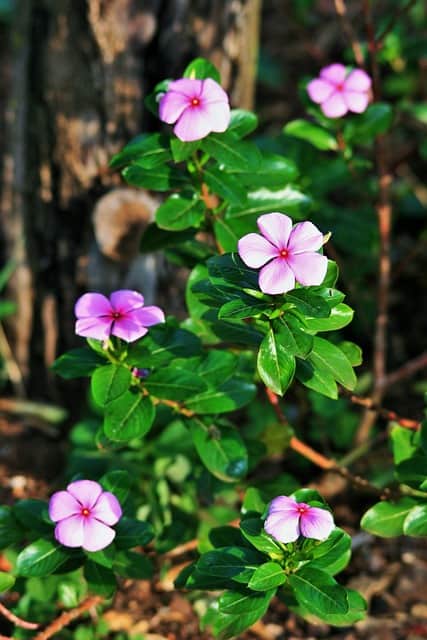
Vinca minor is a resilient evergreen ground cover that’s particularly valued for its glossy leaves and unique blue or violet flowers in spring.
Planting Tip: This hardy perennial thrives in full to partial shade and is ideal for suppressing weeds while providing year-round greenery.
Companion Planting: Great with hostas and ferns for a beautiful, layered effect, Vinca minor can seamlessly fill in gaps in your shade garden.
Maintenance: Once established, Vinca minor is very low maintenance, requiring occasional trimming to keep its growth in check.
Barrenwort (Epimedium)

Barrenwort, also known as epimedium, is an often-overlooked perennial with heart-shaped leaves and delicate spring flowers.
Planting Tip: This plant is perfect for dry, shaded gardens, making it a valuable addition to areas where moisture control is a concern.
Variety Spotlight: ‘Honey Bun’ is a compact choice with lovely pastel flowers that elevate the charm of any shaded corner.
Using as Ground Cover: It naturally spreads, making it an excellent choice for covering bare ground and preventing weeds in shaded garden spots.
Hellebore
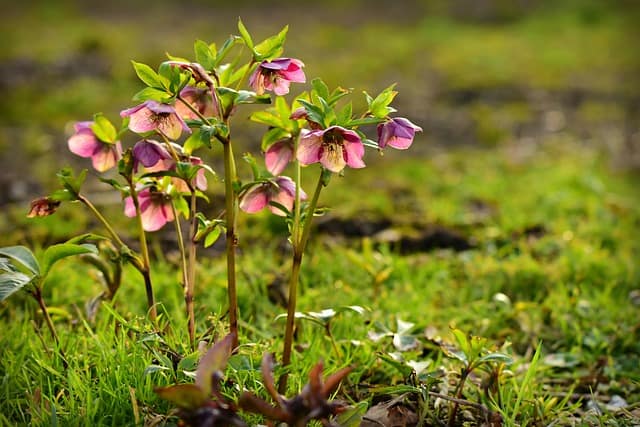
Hellebores, often referred to as the Christmas rose, are invaluable for adding color to the winter and early spring garden, blooming with beautiful blooms in various shades.
Planting Tip: Preferring well-drained soil with ample organic matter, Hellebores can withstand cold temperatures, often flowering in late winter or early spring.
Variety Spotlight: ‘Pink Frost’ features stunning bi-color blooms that attract attention and create show-stopping garden displays.
Companioning Suggestions: Plant Hellebores alongside spring-blooming bulbs like daffodils to create early-season color contrasts.
Digitalis (Foxglove)
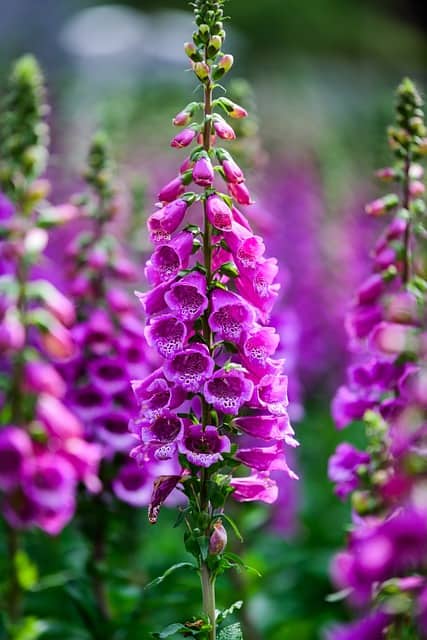
Foxgloves are charming biennials that produce stunning tall spikes of flowers which can flourish in partial shade. These stately plants can create impactful vertical lines in your garden.
Planting Tip: While Foxgloves prefer some sunlight, they can thrive in partial shade with adequate watering and nutrient-rich soil.
Variety Spotlight: Digitalis purpurea offers vibrant purple blooms alongside white and yellow varieties that add striking color.
Important Notes: Ingestion of all parts of this plant can be toxic. Use caution in family gardens, especially with young children or pets around.
Lady’s Mantle (Alchemilla mollis)
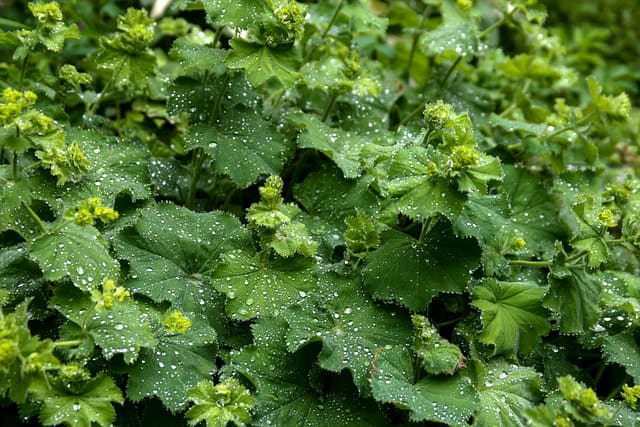
Lady’s mantle is a reliable perennial producing soft green foliage that catches raindrops beautifully, creating a captivating visual effect.
Planting Tip: This hardy plant prefers moist, well-draining soil and can thrive in various conditions, including dry shade once established.
Variety Spotlight: The ‘Gold Strike’ variety brings golden edges to the leaves, creating added interest throughout the growing season.
Companionship: Best partnered with pale-flowered plants, Alchemilla mollis harmonizes well with lighter-colored blooms, enhancing their beauty.
Cimicifuga (Black Cohosh)
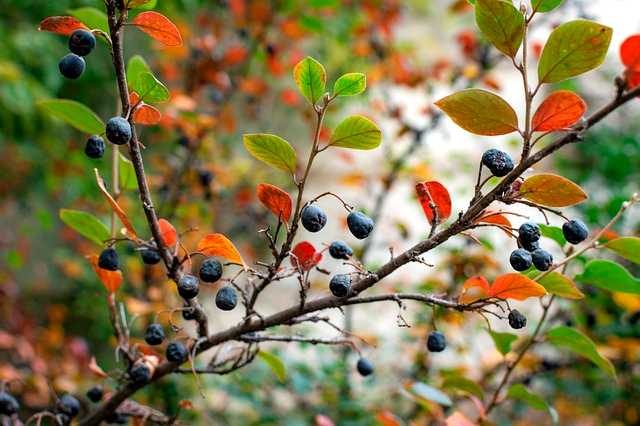
Cimicifuga, or black cohosh, brings architectural interest with its tall, graceful flower spikes that bloom late in the summer or early fall.
Planting Tip: Preferring rich, moist, well-drained soils, this perennial typically thrives in partial shade and can provide height in your garden layout.
Variety Spotlight: The ‘Brunette’ variety has dark foliage that nearly emphasizes white flower spikes, while maintaining a romantic woodland look.
Pollinator Friendly: The flowers can attract beneficial insects, enhancing the biodiversity within your garden.
Sedum (Stonecrop)
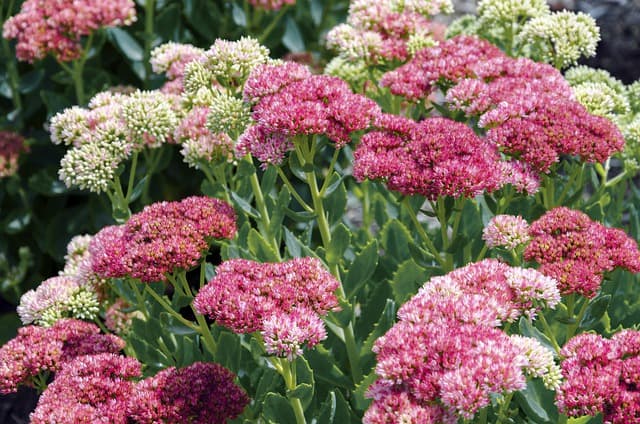
Certain sedum varieties can thrive in partial shade, and they offer colorful foliage and unique forms. Their succulent nature allows them to endure dry spells and adapt to various soil types.
Planting Tip: Make sure the soil drains well to avoid root rot; too much moisture can be detrimental.
Variety Spotlight: Sedum ‘Autumn Joy’ is stunning in full bloom with rosy flowers that age to a deep bronze in fall, adding texture to your space.
Dynamic Pairings: Pair sedum with taller plants to create layers, ensuring their widespread growth does not overpower neighboring plants.
Ornamental Grasses
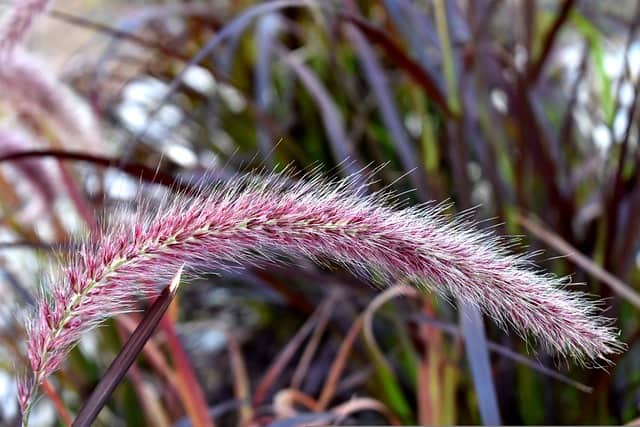
Ornamental grasses can add movement and texture to shaded areas. Varieties like Carex and Hakonechloa thrive in low light and bring unique arching forms to your garden landscape.
Planting Tip: Ensure they have well-draining soil and the proper moisture balance to thrive, particularly during dry spells.
Variety Spotlight: Carex ‘Evergold’ features striking variegated blades that brighten corners of dense shade, while Hakonechloa macra provides lovely cascading foliage.
Garden Design: Planting grasses in clusters will give a natural feel and act as a beautiful backdrop for flowering perennials.
Alchemilla (Lady’s Mantle)

Lady’s mantle has velvety, rounded leaves that beautifully catch raindrops. The unique foliage and tiny yellow-green flowers add enchantment to any shaded garden.
Planting Tip: It thrives in a variety of soil types and prefers consistently moist conditions, making it suitable for under trees.
Variety Spotlight: ‘Glenhill’ features an eye-catching floral display and offers resistance to drought once established, enhancing versatility.
Enhancing Aesthetics: The shimmering leaves serve as an excellent frame for larger flowering plants, allowing for balanced aesthetics in mixed plantings.
Crested Iris (Iris cristata)
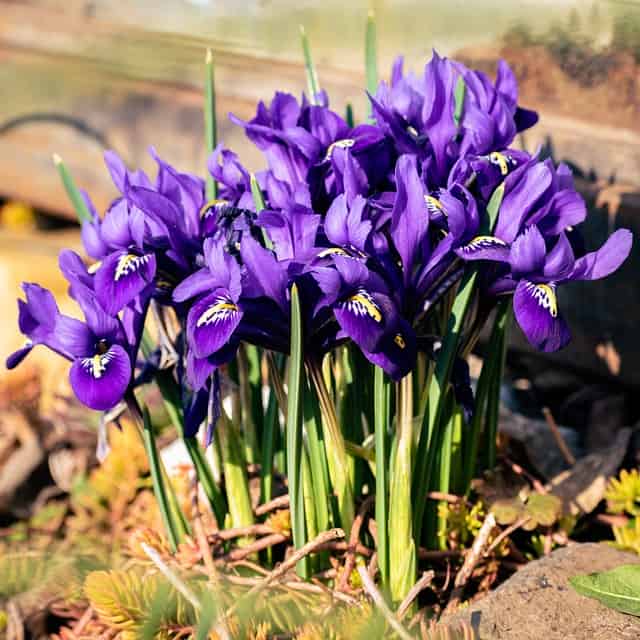
Crested iris brings vibrant blue and purple blooms to shaded areas, making it an attractive addition that acts as a natural focal point.
Planting Tip: Preferring slightly acidic, well-drained soil, this low-growing plant thrives in lighter shaded spots.
Variety Spotlight: ‘Chantilly’ is a brilliantly-colored variety, showcasing lovely soft purple blooms and attractive grassy foliage.
Planting in Groups: Plant them in clusters for a stunning bloom display that will enhance visual appeal in any part of your garden.
Ground Morning Glory (Convolvulus sabatius)
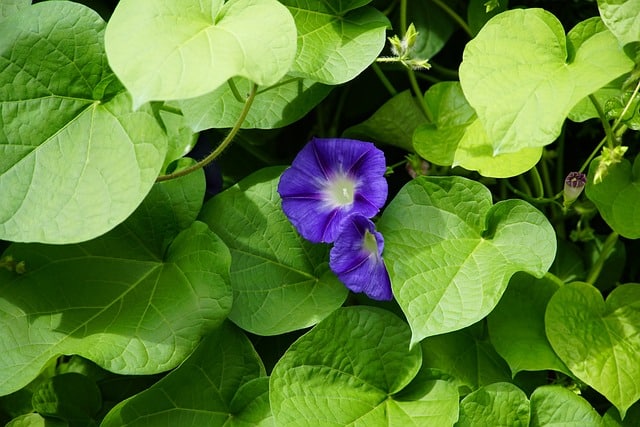
Ground morning glory can flourish in both partial and full shade, providing vibrant trailing vines that naturally spill over edges.
Planting Tip: Preferring well-drained soil, it’s adaptable and will thrive even in slightly poor-quality soil.
Variety Spotlight: ‘Blue Bayou’ offers cheerful, vibrant blue flowers that invigorate any corner it occupies.
Using as Containers: This is an excellent selection for hanging baskets and containers, where they can gracefully cascade for a soft touch.
Siberian Bugloss (Brunnera macrophylla)
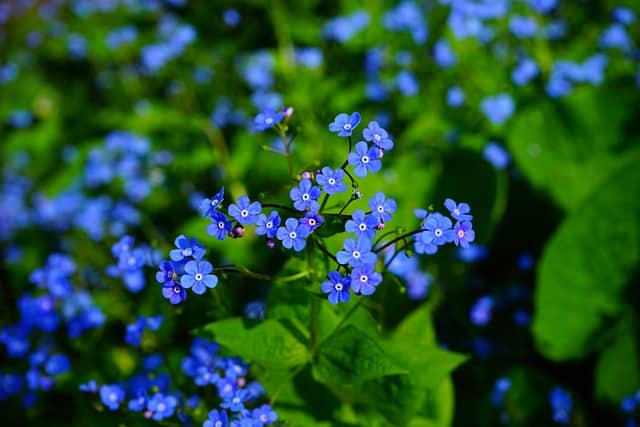
Siberian bugloss, with vibrant blue flowers resembling those of forget-me-nots, adds a romantic touch to shaded gardens and is considered a lovely ground cover.
Planting Tip: Preferring well-drained, moist soil, Brunnera can handle slightly drier conditions once established.
Variety Spotlight: The ‘Jack Frost’ variety, with beautiful silver variegation, becomes a standout foliage option and thrives happily even in shade.
Layering with Other Plants: Combine it with other spring bulbs or early bloomers for an enchanting, colorful display.
Ajuga (Bugleweed)
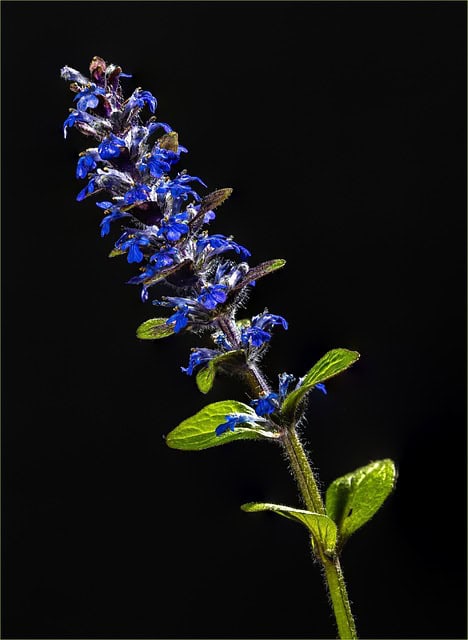
Ajuga is a vigorous ground cover that presents blooms above its richly colored foliage, providing an attractive blanket in shaded areas.
Planting Tip: It thrives in various soil types and is excellent for outcompeting weeds, providing longevity in shaded gardens.
Variety Spotlight: The ‘Chocolate Chip’ variety features dark green leaves and beautiful purple flowers, creating stunning contrasts.
Garden Adaptations: Using Ajuga around stepping stones or paths will provide visual interest and ensure weeds are kept at bay.
Toad Lily (Tricyrtis)
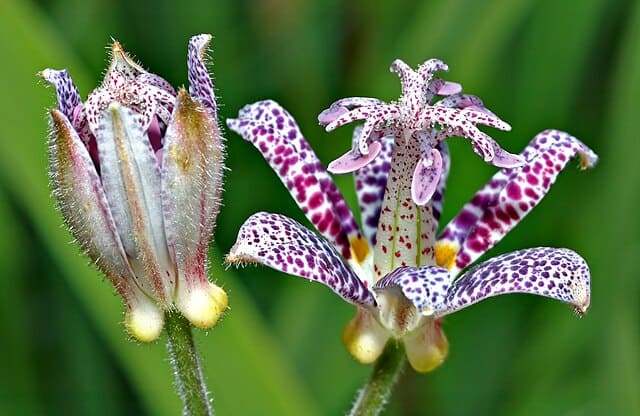
Toad lilies are striking perennial plants that produce unique star-shaped flowers as summer winds down, a remarkable sight in a shade garden.
Planting Tip: Preferring moist, well-drained soil and partial shade, these intriguing plants thrive when grouped together for maximum visual impact.
Variety Spotlight: ‘Tojen’ has stunning spotted flowers that create a visual statement while being relatively easy to care for.
Pairing Ideas: They blend seamlessly into woodland gardens, enhancing the natural aesthetic and promoting biodiversity.
Caring for Shade-Loving Perennials
While shade-loving perennials are generally low-maintenance, following some essential care guidelines will help them thrive:
Soil Quality: Augmenting your soil with organic matter like compost is crucial. This not only enhances nutrient availability but also promotes healthy drainage.
Watering Strategies: Monitor the moisture levels during dry spells. A deep watering once a week during the summer can be incredibly beneficial for hydration.
Mulching Benefits: A 2-3 inch layer of mulch retains moisture, suppresses weeds, and promotes temperature stability in the soil.
Fertilization Needs: Generally, a light application of a balanced fertilizer in spring will improve growth, but avoid over-fertilization as it may hamper flowering.
Pruning and Deadheading: Regularly removing dead flowers encourages vigor and checks disease while ensuring the plants stay tidy.
Dividing Plants: Many vibrant perennials thrive on division every 3-5 years. This rejuvenation practice helps maintain overall health and abundance.
Conclusion
A shade garden can be one of the most stunning and serene retreats in your home landscape. The 25 perennials highlighted in this article will each play an important role in bringing both beauty and diversity to your shaded areas. Embrace the unique conditions of your space and enjoy the process of experimenting with plant combinations, textures, and colors.



